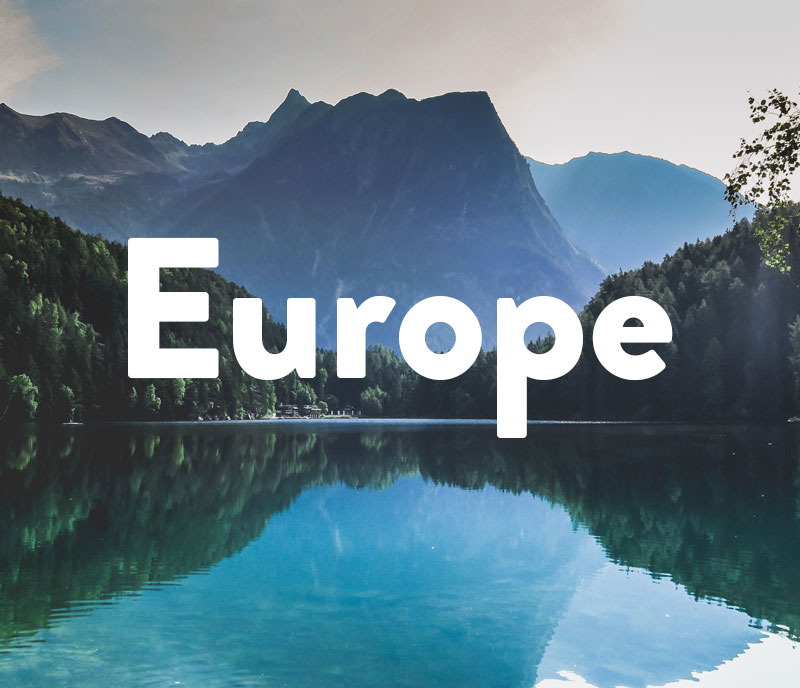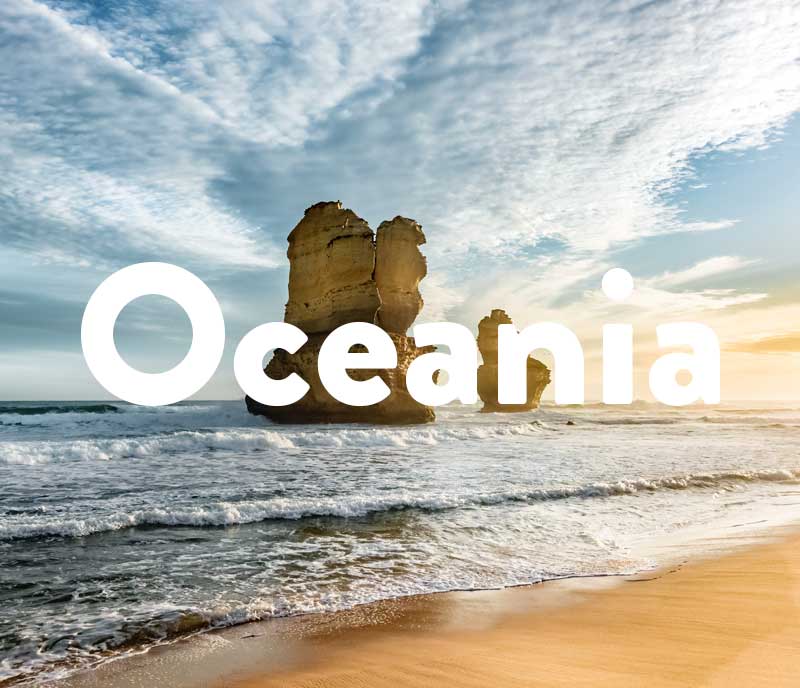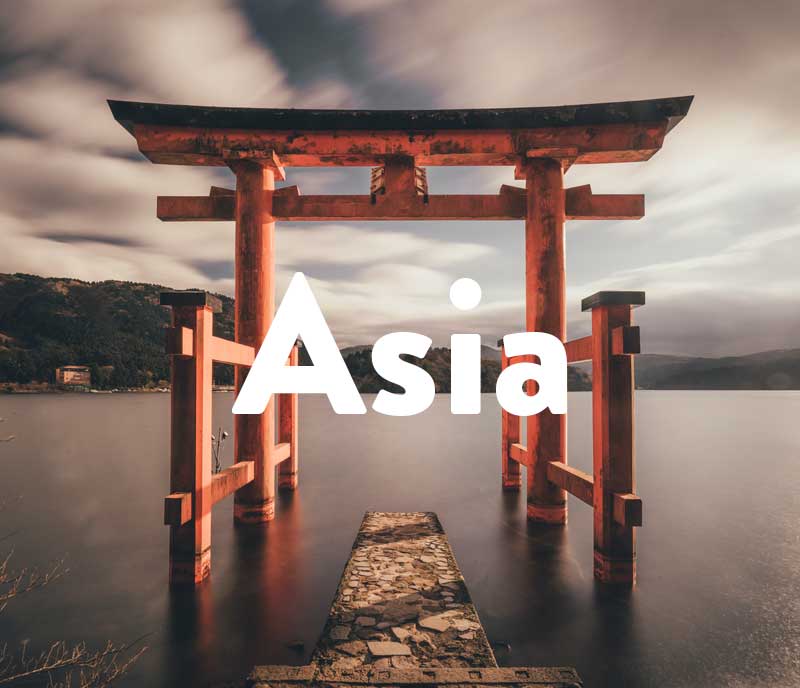Peru is world famous for the ancient ruins of Machu Picchu that belonged to the Incan empire.
But Peru is also one of the world’s 10 megadiverse countries and contains countless natural wonders with hundreds of endemic plant and animal species. Peru is also Lima and its diverse culinary culture, Arequipa and its volcanoes, Iquitos and its jungle. Peru its ceviche and Pisco, its music and colors, its cultural diversity.
Peru is much more than you imagine, and here you will find all about it!
Dive into our (free) travel guides below!
.
.
.
.
.
.
.
.
The Key Info
Peru ranks as the 3rd largest country in South America and is located in the central Pacific coast of South America.
It shares its northern border with Ecuador and Colombia, with Brazil and Bolivia to the east and Chile to the south. Its western border is flanked by the Pacific Ocean.
Peru’s capital is Lima, where in its metropolitan area of over 2800 square kilometers there are over 12 million people.
Spanish is the official language in Peru, although there are other official languages belonging to the indigenous groups living in Peru such as Quechua and Aimara.
In terms of nature, Peru is a very diverse country. Its landscapes range from the dry south and the arid coastline, to the mountain tops of the Andes and the Amazon Forest in the most eastern part of the country.
Peru in Numbers
- Population: 33,105,273 inhabitants
- Total size of the country: 1,285,216 km²
- Capital city: Lima
- Currency: Sol
- Languages: Spanish, Quechua, Aymara and other indigenous languages.
- Religion: Roman Catholic (76%), Protestants (14%), non-religious and others (10%)
The 5 Largest Cities in Peru
The largest cities in Brazil are Lima, Arequipa, Trujillo, Chiclayo and Iquitos.
# 1 Lima
Lima is located in the center of Peru’s coastal line and it is home to over 9 million people.
The city center, made up of remarkable colonial architecture like the Plaza de Armas, is recognized as a World Heritage Site. But it doesn’t end there. You can wander around the ruins of Huaca Pucllana, an impressive ancient pyramid. Or enjoy the vibe of Miraflores while eating some of the best ceviche on the planet. Perhaps do some shopping at Larcomar mall. Maybe even spend the night in the Barranco quarter, where bars and restaurants pop around impressive street art, topped with amazing ocean views. And if you want to do something a bit different, take a short boat ride to Palomino’s Island to swim with sea lions!
# 2 Arequipa
Arequipa is the biggest city in the south of the country with over a million inhabitants.
Arequipa is arguably the most beautiful city in Peru. It is known as the White City due to the beautiful white structures built from volcanic stones. Its streets are packed with history, museums burst with culture and in the restaurants, you will try the most diverse cuisine in the country. And to top it all off, the city is right in front of an active volcano.
Despite all it has to offer, the main attraction in the Arequipa area is the picturesque Colca Valley, one of the world’s deepest canyons and an area of incredible beauty.
# 3 Trujillo
Trujillo is located in the north of Peru near the Pacific Ocean. It’s home to 920,000 people.
The cityscape features unique monuments dating from the Incan empire, along with many from the Spanish colonial period. It’s also known for its spring-like weather due to its proximity to the Pacific Ocean.
Lots of tourists come to this region to visit its many archaeological sites. Among them is Chan Chan and ancient pyramids like the Pyramids of the Moon and Sun. The Latte is the biggest of its kind and its construction required approximately 140 million bricks.
# 4 Chiclayo
Chiclayo is located in the north of Peru and has 800,000 inhabitants.
During the colonial period, Chiclayo was nothing but a small village. It therefore has no ancient architecture, but it is located in a privileged area surrounded by archeological wonders, making it a very sought-after destination for its archeological and cultural offerings nonetheless. Among those attractions are the Museo de Tumbas Reales de Sipán (Royal Tombs museum) and the Tucume pyramids.
# 5 Piura
Piura has almost half a million inhabitants and is the closest city to the northern border between Peru and Ecuador.
The historical city center offers a nice and chilled vibe where you can wonder around admiring the colonial buildings such as the cathedral in Plaza de Armas. But most of the tourist attractions live outside the city… Catacaos, a craftsmen village, or the archeological site of Narihualá, for instance, where you can check out the impressive Fortaleza de Narihualá (Narihuala Fortress).
TOP Tourist Attractions
# 1 Machu Picchu
Named one of the seven wonders of the world, promoted to a World Heritage Site and starring as the main tourist attraction in Peru hasn’t taken away from the Machu Picchu magic. It was built by the Inca empire in the 15th century on top of a deep valley and in between two mountains, where you can also climb for an astonishing view of the whole archeological site and its beautiful surroundings.
Its mesmerizing architecture and mind-blowing location makes it, hands down, one of the hottest tourist destinations on Earth.
# 2 Cusco
Cusco was the historic capital of the Inca Empire and features many well-preserved buildings dating back to Inca and to Spanish colonial rule. Although the city itself is incredibly beautiful, it is also used as a base to explore nearby places like Machu Picchu, Sacsaywamán fortress, Maras salt pans, the Sacred Valley, Pisac and the Rainbow Mountains.
# 3 Nazca lines
The Nazca Lines are one of the more exquisite and enigmatic sights in Peru. This giant drawings of people, animals and other geometric shapes, some up to 100m in length, were carved into the desert around 2000 years ago. Their true purpose remains obscure, so my suggestion is you take a flight (starting at 50 dollars) and check them out by yourself.
# 4 Uros Islands
The artificial islands of the Uros, Lake Titicaca’s main tourist attraction, are made of dried totora reeds. The lives of the Uros, a pre-Incan people, are interwoven with these reeds, which is a primary source of food and are also used to make their homes, their boats and even a reed flower tea. Reeds are added to the top of the islands constantly, about every three months, as they rot from the bottom, so the ground is always soft and springy.
# 5 Iquitos
Iquitos is the largest city in the world to be inaccessible by roads. So, planes and boats are the primary modes of entrance. Because of its location on the banks of the Amazon River in northeastern Peru, Iquitos is a great place from which to explore the Amazon. There are several tour companies that assist people in exploring the Peruvian Amazon.
Best time to travel
It really depends on where you are going.
The North: Peru’s entire coastline is cold, except for the very north of the country. The combination of warmer waters and constant sun makes it a year-round destination. For surfing though, December to March is the best time period.
Lima: From December to March – avoid visiting whenever it`s not summer.
The Amazon: Conditions along the Amazon River in Peru divide into two seasons: a high-water season from December through May, and a low-water season that lasts from June until November. If you want to hike, better try to get there during the low-water season, although you should expect rainfall. It’s called the rainforest for a reason!
Cusco: Winter, from May to October (especially June, July, and August), in Cusco is by far the best time to visit, but, of course, it is also the busiest season, so expect higher prices during the dry months.
Holidays in Peru
- January 1: New Year
- March- April (movable): Holly Week. Jueves Santo, Viernes Santo and Domingo Santo
- May 1: International Workers’ Day
- June 29: Feast of Saints Peter and Paul
- July 28 and 29: Independence Day
- August 30: Santa Rosa de Lima
- October 8: Battle of Angamos
- November 1: All Saint’s Day
- December 8: Immaculate Conception
- December 25: Christmas
Do I Need a Visa?
Both United States of America’s citizens and Europeans Union citizens with a valid Schengen passport do not need a visa to enter the country for touristic reasons.
Other nationalities, you can check if you have to apply for a visa here:
Peruvian Currency
The national currency is the Colombian Peso (COP). Banknotes are available at 10, 20, 50, 100 and 200 soles. Coins come in 1, 5, 10, 20 and 50 cents of sol and 1, 2 and 5 soles.
Money / Credit Cards: Credit cards are commonly used in major cities, so there should be no problem paying with them. Although when travelling outside of major cities, it is a good idea to pack enough cash.
Dos and Don’ts in Peru
Get along in Peru by following these dos and don’ts.
| Do | Don’t |
| Shaking hands when meeting people for the first time is fine, but then expect to have to kiss your friends and acquaintances on the cheek once. | Beckon someone with a single finger and a fist. This is considered a rude gesture in Peru. Try to summon someone by opening your palm and making a motion towards yourself. |
| Try out surfing. Peru boasts amazing locations for both would-be surfers and professionals. | Flush toilet paper down the toilet; the sewage system throughout most of Peru is extremely delicate. There are bins at the side of toilets for tissue and other waste. |
| Drink from the same glass. Especially in the mountains, people will share their drink with you as a sign of friendship and trust. | Wear revealing clothes. It is a modest country with a lot of practicing catholics, so its best to tone it down a little. Also it will help you not to attract unwanted attention. |
Must-Haves for Your Peru Packing List!
Peru’s weather diversity makes it difficult to design the perfect backpack setup, but here are some essentials:
- Rainwear or waterproof clothing.
- Hiking boots and socks. Your feet will thank you if you are planning on longer treks.
- Tons of mosquito repellent.
- The standard voltage in Peru is 220 V and the standard frequency is 60 Hz. Power plugs and sockets are of type A and C.
- Day bag. In order to pack the essentials for the day.
Secret tips from bloggers worldwide
- Colca Canyon: a remote natural paradise with lots to offer. – The Tips Gypsies
- Huacachina: the city in the desert. – Scratch My Pack
TOP Instagrammable Places in Peru
- #machupicchu (1.5M posts)
- #huacachina (246k posts)
- #paracas (274k posts)
- #colcacanyon (80k posts)
- #titicaca (164k posts)
- #rainbowmountain (145k posts)
- #puno (293k posts)
Fun Facts About Peru
Did you know…?
The highest sand dune in the world, Cerro Blanco, can be found in Peru. It is located in the Sechura Desert and stands 3,860 feet from base to summit.
Potatoes originated in Peru and today, there are over 3,000 varieties grown in the country.
Shamanism is widely practiced. In fact, only India has more shamans than Peru. One of the most internationally known shamanic ritual is the infamous Ayahuasca ritual.
Keep reading
- Your ultimate guide to hiking
- Dresden and Saxon Switzerland – The perfect weekend trip
- Vacation in Carinthia: Experience the sunny side of the Austrian Alps
- Craft Unforgettable Postcards: Say Goodbye to Writer’s Block with AI (Coming soon!)
- Discovering the Charm of San Antonio: 5 Hidden Must-Visit Places







